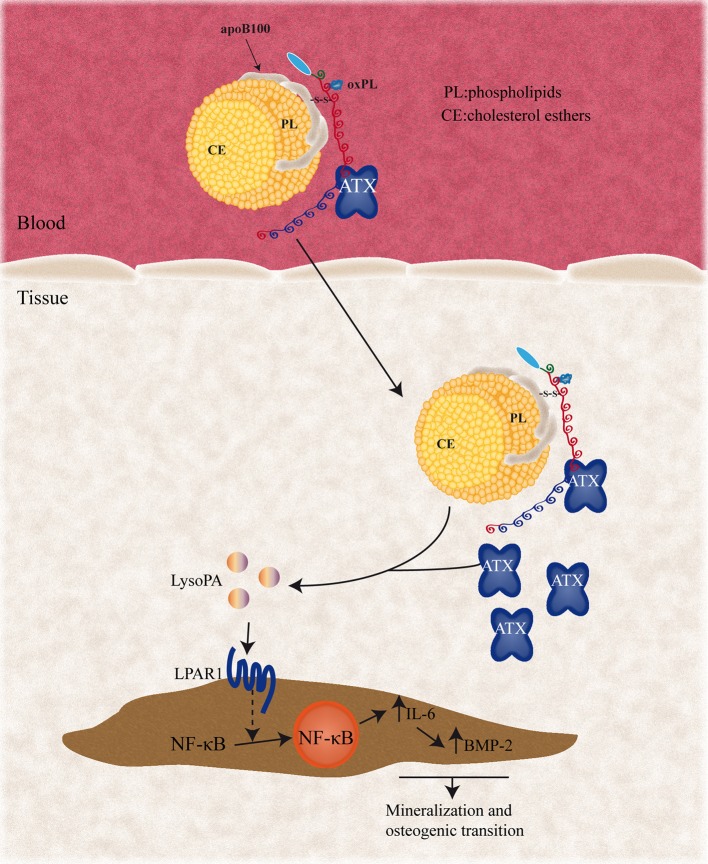Figure 1.
Circulating Lp(a) particles associate with ATX and enter the aortic valve, where ATX can metabolize lysophosphatidylcholine (LysoPC) presents in the Lp(a) particles into lysophosphatidic acid (LysoPA). Pericellular LysoPA can then associate with LPAR1, which promotes NF-κB nuclear translocation. NF-κB activation results in elevated expression of the IL-6 and BMP-2 pro-osteogenic factors. ATX, autotaxin; LPAR1, lysophosphatidic acid receptor 1; IL-6, interleukin 6; BMP2, bone morphogenetic protein 2; NF-κB, nuclear factor kappa B.

